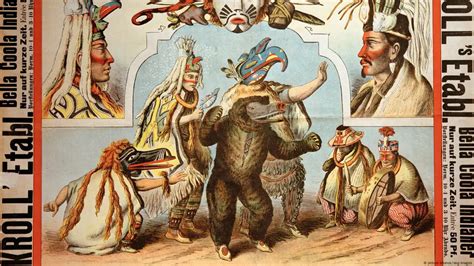louis vuitton black people zoo | Fact check: No evidence that Louis Vuitton sponsored racist louis vuitton black people zoo An exhibition in Paris looks at the history of so-called human zoos, that put inhabitants from foreign lands, mostly African countries, on display as article of curiosity.
$13K+
0 · Remembering the Racist History of ‘Human Zoos’
1 · Louis Vuitton
2 · Human zoos: When real people were exhibits
3 · Human zoo
4 · Human Zoos: The Western World’s Shameful Secret, 1900
5 · From Maasai to Monograms: The Louis Vuitton Cultural Controversy
6 · Fact check: No evidence that Louis Vuitton sponsored racist
7 · Fact check: Claims Louis Vuitton sponsored human zoos are
8 · FACT CHECK: Did Louis Vuitton Sponsor ‘Human Zoos
9 · Did Louis Vuitton Sponsor 'Human Zoos' in the 1800s and Early
$5,855.00
Claim: In the late 1800s and early 1900s, Louis Vuitton sponsored "human zoos" in which black people were put on display like exotic circus animals.
“Blacks were looked at as exotic circus like creatures. These zoo’s were in New York, St. Louis, Australia and many more other places.” There is, however, no evidence that . “Did you know in the late 1800s and early 1900s, Louis Vuitton sponsored ‘human zoos’ in which black people were put on display like exotic circus animals?” This distressing .
A photograph crudely named ‘The extremes meet – civilized and savage watching life savers’ exhibition’ shows a scene from the World’s Fair St. Louis, 1904, with tourists . A viral claim asserts that Louis Vuitton sponsored human zoos in the 19th and 20th centuries. Louis Vuitton says the claim is false.
An exhibition in Paris looks at the history of so-called human zoos, that put inhabitants from foreign lands, mostly African countries, on display as article of curiosity. In one, from a “Black village” in 1900s France, a male weaver sits cross-legged at a loom as a crowd of men in top hats stare at him from behind a barrier.Critics argued that presenting African culture in the context of a zoo contributed to exoticizing and stereotyping Africans, thus laying the ground work for racial discrimination, and that solidarity . Louis Vuitton has faced criticism for its appropriation of African symbols and aesthetics, specifically the Kwele tribe’s iconic monograms. The company has been accused .
Claim: In the late 1800s and early 1900s, Louis Vuitton sponsored "human zoos" in which black people were put on display like exotic circus animals.
While Louis Vuitton did participate in the fair and present products that appropriated African culture, there is no evidence the fashion brand sponsored the human zoo . “Blacks were looked at as exotic circus like creatures. These zoo’s were in New York, St. Louis, Australia and many more other places.” There is, however, no evidence that . “Did you know in the late 1800s and early 1900s, Louis Vuitton sponsored ‘human zoos’ in which black people were put on display like exotic circus animals?” This distressing .
A photograph crudely named ‘The extremes meet – civilized and savage watching life savers’ exhibition’ shows a scene from the World’s Fair St. Louis, 1904, with tourists .
A viral claim asserts that Louis Vuitton sponsored human zoos in the 19th and 20th centuries. Louis Vuitton says the claim is false. An exhibition in Paris looks at the history of so-called human zoos, that put inhabitants from foreign lands, mostly African countries, on display as article of curiosity. In one, from a “Black village” in 1900s France, a male weaver sits cross-legged at a loom as a crowd of men in top hats stare at him from behind a barrier.Critics argued that presenting African culture in the context of a zoo contributed to exoticizing and stereotyping Africans, thus laying the ground work for racial discrimination, and that solidarity .
Louis Vuitton has faced criticism for its appropriation of African symbols and aesthetics, specifically the Kwele tribe’s iconic monograms. The company has been accused .Claim: In the late 1800s and early 1900s, Louis Vuitton sponsored "human zoos" in which black people were put on display like exotic circus animals. While Louis Vuitton did participate in the fair and present products that appropriated African culture, there is no evidence the fashion brand sponsored the human zoo .
rolex daytona ceramic black or white
“Blacks were looked at as exotic circus like creatures. These zoo’s were in New York, St. Louis, Australia and many more other places.” There is, however, no evidence that . “Did you know in the late 1800s and early 1900s, Louis Vuitton sponsored ‘human zoos’ in which black people were put on display like exotic circus animals?” This distressing . A photograph crudely named ‘The extremes meet – civilized and savage watching life savers’ exhibition’ shows a scene from the World’s Fair St. Louis, 1904, with tourists . A viral claim asserts that Louis Vuitton sponsored human zoos in the 19th and 20th centuries. Louis Vuitton says the claim is false.
An exhibition in Paris looks at the history of so-called human zoos, that put inhabitants from foreign lands, mostly African countries, on display as article of curiosity. In one, from a “Black village” in 1900s France, a male weaver sits cross-legged at a loom as a crowd of men in top hats stare at him from behind a barrier.Critics argued that presenting African culture in the context of a zoo contributed to exoticizing and stereotyping Africans, thus laying the ground work for racial discrimination, and that solidarity .

Remembering the Racist History of ‘Human Zoos’

Historical events in March 1892. Learn about 7 famous, scandalous and .
louis vuitton black people zoo|Fact check: No evidence that Louis Vuitton sponsored racist

























